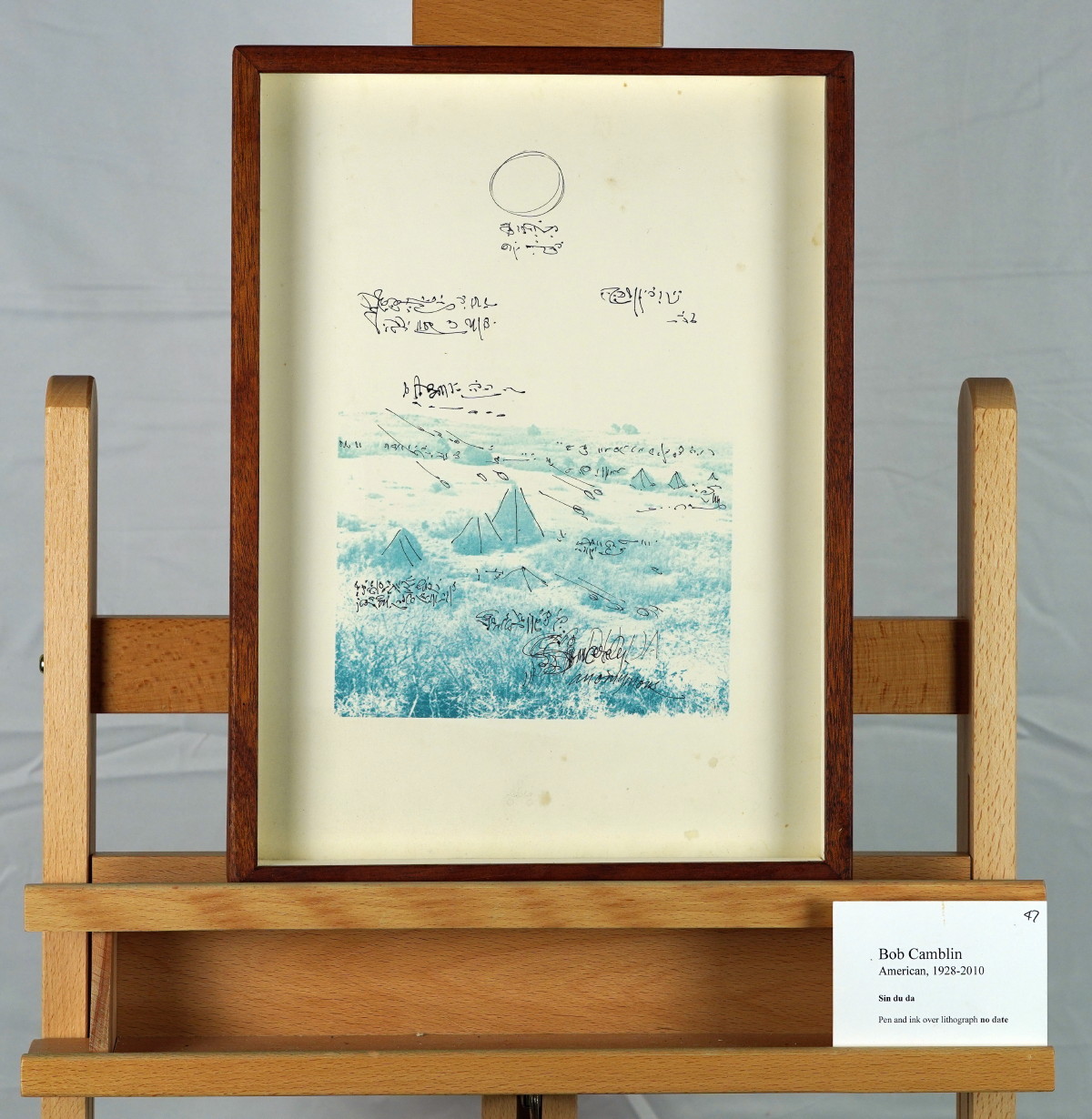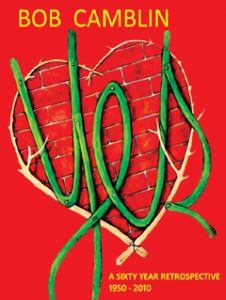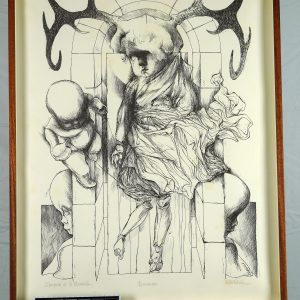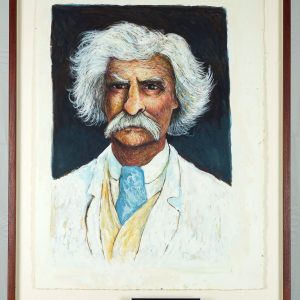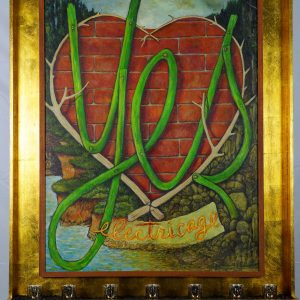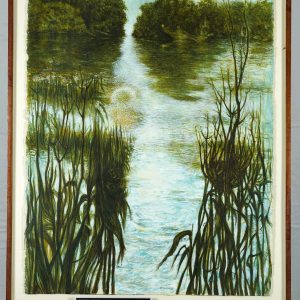Description
Sin du da, no dateLithograph with pen and ink
Signed anonymous (what’s the reason for this?)
11 x 7.5 in. (image)
15.75 x 11.5 x 2 in. (frame)
original, includes certificate of authenticity from ArtTrust
The lithograph and pen and ink “Sin Du Da” presents a combination of abstract symbols and a pale blue-toned landscape in the background, potentially representing pyramidal structures or distant tents on a field. Overlaid across the scene are a series of glyphs or symbols that resemble a script, but are unfamiliar and likely invented for artistic purposes. A large circle is drawn above the scene, adding a sense of celestial significance. The writing appears to be fluid and freeform, with some segments spaced out to give the impression of flowing motion.
From a Zen perspective, the artwork might invite contemplation on the nature of language, meaning, and the human mind’s desire to ascribe meaning to symbols. The seemingly indecipherable script may represent the futility of rigid interpretation, encouraging viewers to experience the piece with an open mind. The calm, expansive landscape combined with the enigmatic writing prompts a letting-go of preconceptions, aligning with Zen’s emphasis on direct experience over intellectual understanding.
The prominent circle at the top could represent the “Taiji” (Supreme Ultimate), often associated with wholeness or the primordial unity from which all things emerge in Chinese philosophy. The landscape and symbols could correspond to the “Creative” (Qian) hexagram, symbolizing pure potentiality, while the arrangements and glyphs may hint at the “Retreat” (Dun) hexagram, suggesting the need to step back and withdraw from action in pursuit of deeper understanding. This blending of elements captures the dual nature of reality as constantly shifting between states of being and non-being.
Viewed together, the artwork can be seen as a meditation on the boundaries of language, consciousness, and the cosmos. It suggests a bridging of the seen and unseen, expressed through the juxtaposition of familiar elements (like landscapes) with abstract, unknowable glyphs. The piece challenges the viewer to find meaning in what is ultimately uncertain and unknowable, encouraging a transcendence of ordinary perception.
The composition recalls works from the Surrealist movement, where the interplay between text, symbol, and dreamlike landscapes was often explored. It also carries traces of the Automatism technique championed by artists like Joan Miró and André Masson, in which marks and symbols emerge from the subconscious without rational planning. The use of invented script is reminiscent of Mark Tobey’s “white writing” technique, which similarly sought to merge text with abstract forms to evoke a sense of spiritual transcendence.
*Shipping cost will vary, please inquire at sales@camblingallery.com before purchasing.
Currently ships from Oregon, USA
Member of artnet? Apply for a discount! Inquire about intergallery and permanent loans for museums.
“Sin du da” was featured in his Yes Retrospective
Reproductions of this drawing are available in multiple sizes!
Click here to use our high-resolution viewer!
This artwork is available with a non-fungible token to ensure traceability and transparency of provenance.
The royalty factor – Unlike traditional artworks, such as paintings, mosaics, statues, and the like, NFTs can be programmed to provide royalties to you every time the painting (and token) is sold and resold – for eternity. That mind-bending Camblin you sold could be worth millions one day and provide income for your great-great-great grandkids!
Anti-forgery – The central idea underpinning NFTs is that they are built on the blockchain, which is meant to offer advanced security. Think of it like an un-erasable and un-avoidable copyright.
Easy authentication – Another compelling aspect of NFT art and NFTs in general is the ability to quickly and easily authenticate items, as the record of ownership is scrupulously kept on the blockchain.
